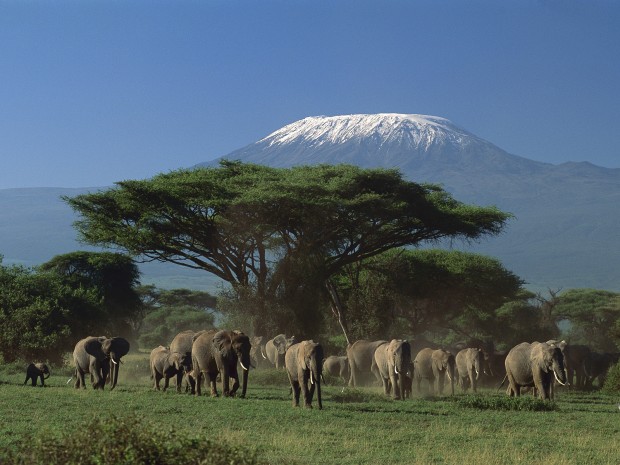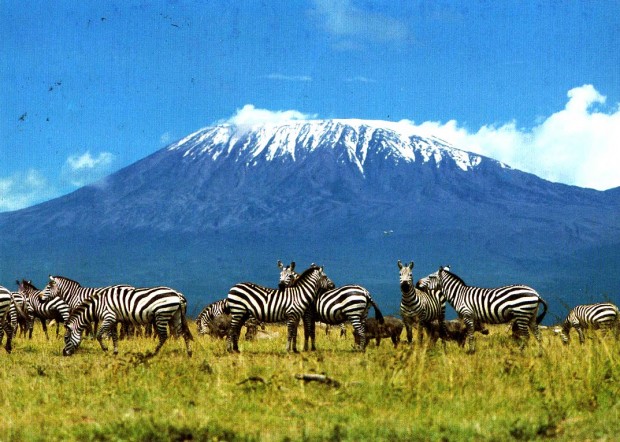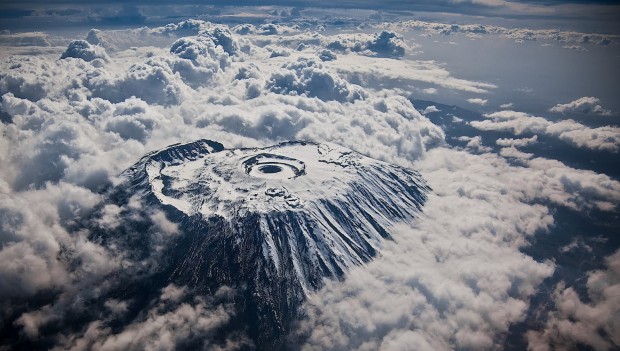Mount Kilimanjaro is an extraordinary landmark in Tanzania, known for its distinct three volcanic cones: Kibo, Mawenzi, and Shira. This dormant volcanic giant holds several records: it’s the highest mountain in Africa, standing at 5,895 meters (19,341 feet), and the tallest free-standing mountain in the world. Unlike many of the world’s tallest peaks, Kilimanjaro is not part of a mountain range, making it even more unique.
The mountain’s formation began around 2.5 million years ago due to volcanic activity caused by the movement of tectonic plates in East Africa. Over time, Kilimanjaro’s volcanic cones formed, with Kibo being the youngest and still potentially active. Shira, on the other hand, is considered extinct, having collapsed into a caldera, while Mawenzi is a rugged peak often visited by more experienced climbers.
The Ecological Diversity of Kilimanjaro
One of the mountain’s most fascinating features is its diverse ecosystem, which shifts dramatically as you ascend. At the base, Kilimanjaro is surrounded by cultivated land, home to local villages and farming communities. As climbers move higher, they enter lush rainforest zones, which are rich with wildlife like colobus monkeys and a wide variety of birds.

Above the rainforest lies a heath and moorland zone, where strange and unique plant species, such as giant groundsels and lobelias, thrive in the alpine conditions. Higher up, the landscape turns into an alpine desert, characterized by rocky terrains and extreme temperature fluctuations. Finally, the summit is covered by glaciers and permanent snowfields, a stark contrast to the tropical landscape below.

Climate and Glaciers
Kilimanjaro’s glaciers have been a topic of concern for many scientists, as they are rapidly receding. Once large and expansive, these glaciers are now only a fraction of what they were just a century ago. Climate change is believed to be the primary cause of this decline, and many estimates suggest that Kilimanjaro’s glaciers could disappear within the next few decades if current trends continue.
The mountain experiences a wide range of weather conditions, with temperatures varying drastically from the warm, tropical base to the freezing summit. The weather patterns around Kilimanjaro are heavily influenced by trade winds and monsoons. Rain is common in the lower elevations, especially on the southern slopes, while the summit can see snow and ice year-round.
Cultural Significance of Kilimanjaro
Mount Kilimanjaro holds great cultural importance for the local Chagga people, who live on its southern slopes. For centuries, they have revered the mountain, incorporating it into their legends and spiritual beliefs. Today, many of the guides and porters who assist climbers on the mountain come from Chagga communities, continuing their connection to this natural wonder.
Beyond the Chagga, Kilimanjaro is symbolic for many people worldwide. It has inspired explorers, writers, and adventurers throughout history. Ernest Hemingway famously described the mountain’s “eternal” presence in his short story The Snows of Kilimanjaro. For many, Kilimanjaro represents a personal challenge and a testament to the enduring power of nature.
Kilimanjaro’s Role in Conservation
Kilimanjaro National Park, established in 1973, protects not only the mountain but also its surrounding ecosystems. The park is a UNESCO World Heritage site, recognized for its global significance in terms of biodiversity and geology. The conservation efforts focus on preserving the unique flora and fauna, protecting the mountain from deforestation and human encroachment, and maintaining sustainable tourism practices.
However, Kilimanjaro faces threats from illegal logging, agricultural expansion, and the impacts of tourism. Conservationists continue to work to balance the mountain’s ecological health with the needs of the local population and the demands of international tourism.
Conclusion
Mount Kilimanjaro is not just a towering geological feature; it’s a symbol of natural beauty, ecological diversity, and cultural significance. Its snow-capped peak and volcanic origins continue to inspire awe and wonder. As one of the most accessible yet imposing mountains in the world, Kilimanjaro offers a rare opportunity to experience multiple climates and ecosystems in a single ascent, all while connecting with the rich history and culture of Tanzania.

